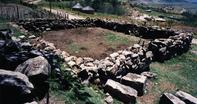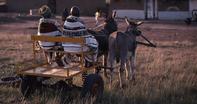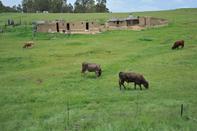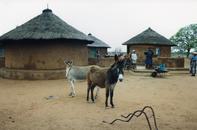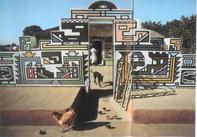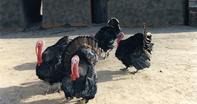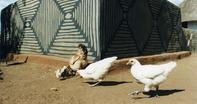
Homestead Animals and Animal Enclosures
The materials used to construct animal enclosures vary considerably from one area to another.
Where stone is readily available, it is used in preference to other, less durable materials like brushwood and the branches of thorny acacia trees.
Even today, many people lack access to cars. For this reason, donkeys continue to be used to transport people and other goods. In some cases, men construct inventive, makeshift vehicles for this purpose.
Because of the need both to protect livestock from predators and to milk cows and goats, some rural farmers follow a daily routine of moving animals between the pastures where they graze and the safety of enclosures close to their homesteads.
In some communities, the use of brushwood serves to protect livestock, especially goats, sheep and young calves, from predators. This includes jackals and caracals. In recent years, managing livestock predation has given rise to deep polarisiations between animal rights activists and farming communities.
Provided they are fairly light, carts can be drawn by as few as two donkeys. Traditionally, larger carts required up to 8 donkeys to pull heavy loads, including recently harvested crops. Donkeys are still commonly used to transport people to and from festivals and rural markets.
South Africa’s North West province has the largest donkey population in the country. Recently, though, this population has been threatened by poaching aimed at satisfying an increase in donkey skin demand in China where they are reportedly used to produce drugs to delay menopause.
Rural homesteads are often populated by animals like cows, goats, donkeys and chickens. Cattle and goats are slaughtered mainly on ritual occasions, their milk playing an important role in supplementing the protein needs of families living in outlying areas.
Chickens and other domestic fowls like turkeys are usually allowed to roam freely in and around the homestead. Most live on the scraps of porridge and vegetable cuttings women discard before and after cooking meals for their families. Although generally no-one seems to take notice of the chickens roaming in and around rural homesteads, women always know exactly how many they own, and whether or not they lay eggs regularly.
By
Professor Sandra Klopper